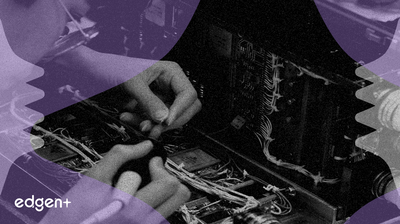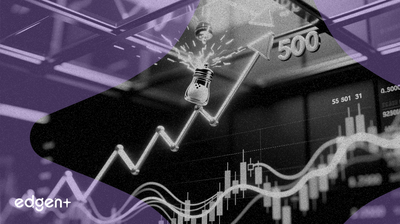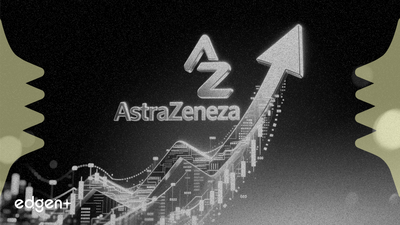 Report
Report
No Data Yet

## The Event in Detail Multiple accounts on **Polymarket**, a decentralized prediction market, have registered significant profits by placing bets on corporate milestones at major artificial intelligence firms shortly before they were publicly announced. One series of transactions correctly predicted the release window for a new large model from **OpenAI**. In a separate, more conspicuous case, a single account reportedly profited by over $1 million by wagering on undisclosed details related to **Google's** 2025 search data. These events strongly suggest that individuals with access to non-public information are leveraging prediction markets to monetize their knowledge, effectively engaging in insider trading. ## Deconstruct the Financial Mechanics The incentive for such trading is rooted in the extraordinary financial valuations and capital intensity of the AI sector. **OpenAI** operates with a benchmark valuation of **$500 billion**, established during a recent employee share sale. The company, while not public, commands a valuation that hinges on maintaining its technological lead. This is evidenced by its annualized revenue run rate reaching **$10 billion** as of June 2025, counterbalanced by enormous capital needs. Financial analyses project a challenging path to profitability; one **Deutsche Bank** estimate suggests **OpenAI** could accumulate a negative free cash flow of **$143 billion** between 2024 and 2029. This financial pressure is industry-wide. **Alphabet (GOOGL)**, with a market capitalization of approximately **$3.7 trillion**, is committing to capital expenditures expected to exceed **$90 billion** for its AI buildout. Meanwhile, competitor **Anthropic** secured a **$183 billion** valuation and has outlined compute-access deals with partners like **Google** and **Microsoft** valued in the tens of billions. In this environment, any advance information on product releases, partnership deals, or competitive positioning carries immense monetary value. ## Market Implications The emergence of insider trading on AI-related events has several critical implications for the market: * **Heightened Regulatory Risk:** The incidents are almost certain to attract scrutiny from regulators, not only for prediction markets like **Polymarket** but also for the AI companies themselves. This compounds the existing legal pressures on firms like **Google**, which faces an EU antitrust probe into its AI Overviews, and **OpenAI**, which is navigating multiple wrongful-death lawsuits. * **Increased Volatility for AI-Exposed Equities:** The market has already shown sensitivity to news in the AI sector. Public companies with significant exposure, such as chipmakers **Nvidia (NVDA)** and cloud provider **Oracle (ORCL)**, have experienced share price volatility tied to concerns over an "AI bubble" and the sustainability of massive spending. Information leaks are likely to exacerbate these sharp price movements. * **Spotlight on Information Asymmetry:** The trades underscore the significant information gap between a small circle of insiders at private AI labs and the broader public market. While investors use public stocks like **GOOGL**, **AMD**, and **MSFT** as proxies for the AI boom, the opaque nature of private company valuations and operations creates fertile ground for information arbitrage. ## Expert Commentary Financial analysts and market observers have increasingly focused on the financial sustainability of the AI arms race. Analyst commentary provides a quantitative basis for the high stakes involved: > According to a **Reuters Breakingviews** analysis, public market proxies can imply even richer valuations for private firms. The analysis suggested that **SoftBank’s** public share price implied a potential valuation for **OpenAI** of roughly **$750 billion**. However, this bullishness is tempered by stark warnings about cash burn. > An **HSBC** estimate reported by the Financial Times projected that **OpenAI** may need to raise at least **$207 billion by 2030** to cover its escalating compute and data-center costs. Despite these costs, some analysts remain positive on key public players. **TD Cowen** analyst John Blackledge raised his price target on **Alphabet** to **$350**, citing increased user engagement from new AI features in Search. This sentiment is echoed by **Evercore ISI**, which holds a **$325** target, linking it to similar AI-driven improvements. ## Broader Context The suspected insider trading is a direct byproduct of the intense technological and financial "arms race" between a handful of dominant AI labs. **OpenAI** initiated a "code red" to accelerate the launch of **GPT-5.2** specifically to counter the competitive threat from **Google’s Gemini 3**. This rivalry forces companies into a relentless cycle of development and capital expenditure, where maintaining a competitive edge is paramount. The strategic decisions made by these private entities have direct and significant ripple effects on publicly traded companies. The success or failure of AI models from **OpenAI** and **Google** directly influences demand for specialized hardware from **Nvidia** and **AMD**, cloud services from **Microsoft** and **Oracle**, and enterprise partnerships with firms like **Disney**. Consequently, any intelligence that offers a glimpse into the future trajectory of these AI leaders is now one of the most valuable—and potentially illicit—commodities in financial markets.

## Executive Summary POET Technologies has garnered renewed market attention following a price target increase from Northland Capital Markets and a strategic collaboration with Quantum Computing Inc. to develop next-generation optical engines for Artificial Intelligence (AI) infrastructure. These developments position the company as a critical supplier in the high-stakes race to build out the data centers required to power the AI boom, a sector currently facing both financial and physical limitations. ## The Event in Detail On December 3, analysts at **Northland** increased their price target for **POET Technologies** from $7 to $8, reflecting growing confidence in the company's strategic direction. This optimism is largely fueled by a prior announcement on November 11, detailing a partnership with **Quantum Computing Inc.** The two companies will co-develop 3.2 Terabits per second (Tbps) optical engines designed specifically to handle the massive data-flow requirements of modern AI and machine learning workloads within data centers. ## Deconstruct the Financial Mechanics The AI infrastructure boom is financed by unprecedented capital expenditure, which is increasingly reliant on debt markets. According to a Bank of America analysis, the top five hyperscalers, including **Google**, **Meta**, **Amazon**, and **Microsoft**, have issued approximately $121 billion in bonds this year to fund data center expansion. **Oracle**, for instance, recently reported $12 billion in quarterly capital expenditures and has a total debt of around $100 billion, primarily to support its partnership with **OpenAI**. However, this debt-fueled strategy is facing scrutiny as Oracle's bond yields widen, signaling that credit investors are reassessing the risk associated with these massive, long-term projects. ## Analyze Business Strategy & Market Positioning POET's strategy is a classic "picks and shovels" approach to the AI gold rush. Instead of competing with chip giants, the company is focusing on a critical bottleneck: high-speed data transmission. By developing specialized optical engines, POET becomes an essential enabler for the entire ecosystem. This approach is validated by the immense pressure on hyperscalers to maximize the efficiency of their multi-billion dollar data center investments. The partnership with Quantum Computing Inc. is a targeted move to combine expertise and accelerate the delivery of a solution for a well-defined, high-value problem. ## Broader Context & Market Implications The AI buildout is colliding with physical reality. The "world of bits moves fast," notes data-center researcher Jonathan Koomey, but "the world of atoms doesn’t." Reports indicate that the construction of new data centers is being hampered by significant delays in sourcing physical components like high-voltage transformers and specialized cooling systems, with lead times stretching into years. These physical constraints amplify the importance of technological efficiency. A 3.2 Tbps optical engine allows for a much higher density of data throughput, enabling hyperscalers to get more performance out of each square foot of their data centers. As companies like **Oracle** face both ballooning capex and construction delays, technologies that boost the efficiency and ROI of their infrastructure investments become mission-critical. POET's optical solutions directly address this need, providing a clear pathway to alleviate the data transmission bottlenecks that threaten to slow down the pace of AI development.

## Executive Summary Quantum Computing Inc.'s (QCi) announcement of its debut at CES 2026 marks a strategic push toward demonstrating commercial applications for its quantum photonics technology. This move reflects a broader industry pivot from theoretical research to tangible use cases, occurring as the nascent quantum sector explores divergent paths to market viability. The immense capital expenditure and supply-chain constraints observed in the adjacent artificial intelligence (AI) infrastructure boom, exemplified by firms like **Oracle**, serve as a critical case study for the financial and logistical hurdles the quantum industry will face in its pursuit of scale. ## The Event in Detail At CES 2026 in Las Vegas, **Quantum Computing Inc.** intends to conduct live demonstrations showcasing its quantum photonics platform. The company will focus on applications with clear commercial potential, including the optimization of financial market outcomes, enhancement of AI model training efficiency, and complex logistical route optimization. This public exhibition is designed to signal to investors and potential enterprise clients that its technology has progressed to a stage of practical utility, moving beyond the confines of the laboratory. ## Market Implications QCi's focus on commercial demonstration places it within a competitive landscape characterized by varied strategic timelines. The quantum sector currently exhibits two primary approaches. One, exemplified by **D-Wave Quantum (QBTS)**, prioritizes near-term commercialization through technologies like quantum annealing. This strategy has yielded measurable results, with **D-Wave** reporting a 100% year-over-year revenue increase to $3.7 million in its most recent quarter. The alternative approach, adopted by firms like **Rigetti Computing (RGTI)**, focuses on developing more speculative, potentially higher-impact technologies for the long term. This path carries greater uncertainty, as reflected in **Rigetti's** 18% year-over-year revenue decline to $1.95 million in the same period. QCi's planned showcase positions it as aspiring to the former camp, aiming to prove its near-term revenue-generating potential. ## Expert Commentary Industry analysts view the development of quantum computing as a double-edged sword, offering transformative potential while presenting significant challenges. Experts note its capacity to "revolutionize medicine, enhance diagnostics, and accelerate innovative drug discovery," while simultaneously cautioning that it could "infiltrate current data encryption models," posing a systemic risk to data security. The path to building out quantum infrastructure is also fraught with physical and financial limitations, mirroring the current struggles in the AI sector. Jonathan Koomey, a data-center researcher, highlights this friction: > "The world of bits moves fast. The world of atoms doesn’t. And data centers are where those two worlds collide." This sentiment underscores the long lead times for specialized hardware and construction, a reality that will likely temper the pace of quantum development regardless of investment levels. ## Broader Context The financial reality of building next-generation computing infrastructure provides a sobering context for the quantum industry's ambitions. **Oracle's (ORCL)** recent market performance offers a compelling case study. The company's commitment to building AI data centers, largely for a single client, resulted in capital expenditures of $12 billion in one quarter and has expanded its total debt to approximately $100 billion. This aggressive, debt-fueled strategy has unsettled investors, causing its bond yields to rise and highlighting market sensitivity to high-risk capital outlays. While other hyperscalers such as **Google (GOOG)**, **Meta (META)**, and **Amazon (AMZN)** are also issuing billions in bonds to fund AI expansion, their stronger cash positions and higher credit ratings provide a more stable foundation. The quantum industry, still in its infancy, will inevitably face similar capital demands for its own specialized data centers. The challenges faced by established tech giants like **Oracle** suggest that the road to scalable quantum computing will be defined as much by disciplined financial strategy and supply-chain management as by technological breakthroughs.

## Executive Summary The U.S. Federal Reserve's latest 25-basis-point interest rate cut has exposed a significant rift among policymakers and amplified concerns that a richly valued stock market, rather than a slowing economy, poses the primary risk of a future recession. While the cut was intended to support a cooling labor market, it comes as equity valuations, driven by an artificial intelligence boom, have reached historic highs. Analysts at **BCA Research** have warned that the large cohort of "excess retirees" makes the U.S. economy uniquely vulnerable to a market downturn, creating a difficult policy dilemma for the central bank as it balances inflation control against financial stability. ## The Event in Detail The Federal Open Market Committee (FOMC) concluded its December meeting by lowering the federal funds rate to a target range of **3.50% to 3.75%**. The decision was not unanimous, passing with a **9-3 vote** that signals growing internal disagreement. Dissenting members expressed concerns over cutting rates while inflation remains above the Fed's **2% target**. Data supporting the decision pointed to a weakening labor market. Initial unemployment claims for the week ending December 6 saw their largest increase since March 2020. Furthermore, Fed Chair **Jerome Powell** acknowledged that government statistics could be overstating job creation by as much as 60,000 jobs per month for 2025. This backdrop complicates the Fed's dual mandate, forcing it to weigh easing to support employment against the risk of reigniting inflation. ## Market Implications Equity markets are exhibiting signs of significant over-extension. The **S&P 500 Shiller CAPE ratio**, an inflation-adjusted valuation measure, recently touched 39—a level surpassed only during the dot-com bubble of the late 1990s. This rally has been heavily concentrated in technology stocks like **Nvidia** and **Alphabet**, fueled by optimism around AI. This high-valuation environment makes the market particularly susceptible to the scenario outlined by **BCA Research**, where a significant correction could trigger a recession. The mechanism is a negative wealth effect on a large demographic of retirees whose consumption is more closely tied to their investment portfolios than ever before. This inverts the traditional sequence where a recession precedes a market crash. ## Expert Commentary The division within the Fed is increasingly public. **Chicago Fed President Austan Goolsbee**, despite dissenting on the December cut, stated he anticipates that rates "can come down a significant amount over the next year." In contrast, **Cleveland Fed President Beth Hammack**, who will be a voting FOMC member in 2026, has advocated for a "slightly more restrictive stance" to ensure inflation returns to target. Adding to the hawkish perspective, former Council of Economic Advisers chair **Glenn Hubbard** has questioned the fundamental case for further rate cuts while the economy is still projected to grow. ## Broader Context The Fed's policy path is clouded by significant political uncertainty. Chair **Jerome Powell**'s term is set to end in May, and President Trump has publicly signaled his desire to appoint a successor who will pursue more aggressive rate cuts. This has raised concerns among investors regarding the future independence of the central bank, a cornerstone of global market confidence. Meanwhile, policy divergence is becoming more pronounced globally. The **Bank of Canada**, for example, recently held its policy rate steady at **2.25%**, citing stronger-than-expected GDP growth and an improving labor market. This transatlantic split in monetary policy highlights the unique pressures and risks facing the U.S. economy as it navigates the twin challenges of high inflation and precarious market heights.

## Executive Summary The S&P 500 index achieved a new record high, surpassing the 6,900 level, propelled by a sustained, AI-driven rally in technology stocks. This milestone marks the index's third consecutive year of double-digit percentage gains. However, this bullish momentum is now met with significant headwinds. Valuations have reached historically elevated levels, with the Shiller CAPE ratio hitting 39, a metric only previously seen during the dot-com bubble. Concurrently, the Federal Reserve executed a "hawkish" rate cut, signaling a cautious outlook. These factors are fueling a market rotation away from mega-cap tech leaders and into cyclical sectors. Investor attention is now intensely focused on a compressed schedule of delayed U.S. economic data releases for November, which are expected to dictate near-term market direction. ## The Event in Detail This week, the **S&P 500** index surpassed the 6,900 milestone for the first time, pushing its year-to-date gain to **16.34%**. This performance has been largely driven by outsized returns in a handful of AI-focused technology companies, including **Nvidia** and **Alphabet**. In contrast, the **S&P Equal Weight** index is up a more modest **10.42%** year-to-date, highlighting the narrow leadership of the rally. The market's ascent was further supported by the Federal Reserve's decision on December 10 to lower the federal funds rate by **0.25 percentage points** to a target range of **3.50%–3.75%**. Despite the cut, the central bank's cautious commentary has tempered expectations for a sustained easing cycle. ## Market Implications Despite the record highs, underlying market dynamics suggest a shift in sentiment. The **S&P 500 Shiller CAPE ratio**, an inflation-adjusted valuation measure, now stands at 39. This is its second-highest level in over 150 years and indicates that equities are expensive relative to historical earnings. On a forward-looking basis, the index is trading at approximately **22 times expected earnings**, well above its 10-year average. This high-valuation environment is contributing to a sector rotation. Since late November, the small-cap **Russell 2000 Index** has gained **11%**, significantly outperforming the mega-cap technology gauge. Recent fund flow data confirms this trend, showing a **$3.3 billion** weekly inflow into U.S. equity funds, with new capital favoring cyclical sectors such as **metals & mining**, **industrials**, and **healthcare**. The rotation was accelerated by disappointing forecasts from AI bellwethers **Oracle** and **Broadcom**, which raised concerns about the profitability of high capital expenditures in the AI sector. ## Expert Commentary Wall Street strategists are increasingly advising clients to diversify away from the so-called "Magnificent Seven" technology stocks. Michael Wilson, Chief U.S. Equity Strategist at **Morgan Stanley**, noted the market may be entering an "early-cycle backdrop" that typically benefits cyclical laggards. Similarly, Jason De Sena Trennert, Chairman of **Strategas Asset Management**, anticipates a "great sector rotation" into financials and consumer discretionary stocks in 2026. Supporting this view, Ed Yardeni of **Yardeni Research**, who has been overweight technology since 2010, recently recommended an underweight position, anticipating a broadening of profit growth across the market. According to data from **Goldman Sachs Group Inc.**, earnings growth for the S&P 500 excluding its seven largest companies is projected to accelerate to **9%** in 2026. ## Broader Context The market is navigating a complex macroeconomic landscape. The Federal Reserve characterized its recent rate cut as "hawkish," with officials expressing that inflation risks remain tilted to the upside while employment risks are tilted to the downside. The vote revealed significant dissent, raising the bar for future rate cuts. A primary source of near-term uncertainty stems from a 43-day federal government shutdown that delayed major economic reports. Consequently, the **November Employment Situation**, **Retail Sales**, and **Consumer Price Index (CPI)** are all scheduled for release in a compressed window between December 16 and 18. The **Bureau of Labor Statistics** has advised that October data for both jobs and CPI will not be published, creating analytical challenges. This data dump will occur just before the December 19 "triple witching" derivatives expiration, a period known for increased trading volume and potential volatility, which could amplify market reactions to the economic releases.

## Executive Summary Companies are navigating a volatile market with a clear strategic split. One path involves aggressive operational austerity, as exemplified by **Opendoor's** (**OPEN**) new cost-reduction strategy following a significant revenue downturn. The other path is a capital-intensive push into proprietary technology, with firms like **Rivian** (**RIVN**) investing heavily in in-house AI development to build a competitive moat. This bifurcation reflects a market where companies must either become hyper-efficient operators or technology leaders, with little room for error in between. ## The Event in Detail: A Tale of Two Turnarounds **Opendoor's** Q3 2025 results underscore the challenges in the real estate market, with revenue declining 34% year-over-year. In response, the new CEO has initiated a strategy centered on aggressive cost-cutting, inventory reduction, and shoring up the balance sheet with a $200 million equity raise. This is a classic, defensive turnaround playbook designed to achieve stability amid macroeconomic headwinds and potential shareholder dilution. In stark contrast, **Rivian** is pursuing an offensive, technology-driven strategy. The company announced a "clean-sheet approach" to its autonomous driving platform, which includes developing a custom **Rivian Autonomy Processor (RAP1)**. This move represents a strategic shift away from third-party suppliers like **Nvidia** (**NVDA**) and toward vertical integration. The market responded with strong approval, sending **RIVN** stock up 12.1% and prompting a price target increase from Needham to $23, a 64% jump. This strategy aims to create a long-term advantage through a proprietary "data flywheel," where vehicle data continuously improves the AI models. ## Market Implications: The Great Bifurcation The strategic divergence between austerity and AI investment is evident across the market. The AI boom is creating immense value for key suppliers, with **Broadcom** (**AVGO**) reporting record annual revenue of $64 billion and a $73 billion backlog for its AI components. This demonstrates a massive flow of capital toward companies enabling the AI revolution. Simultaneously, industries facing direct consumer and macroeconomic pressures are adopting defensive postures. In the foodservice sector, leaders are focusing on operational clarity, with widespread SKU consolidation and an emphasis on efficiency over complex innovation. Similarly, **Johnson Outdoors** (**JOUT**) managed to improve its operating loss from $43.5 million to $16.2 million despite flat revenue, attributing the gain to cost-saving initiatives. This trend is also reflected in private equity, where Q3 2025 transportation deal flow stalled due to uncertainty, even as investment in AI-driven trucking and logistics technology continued. ## Expert Commentary: In-Housing vs. Efficiency Wall Street has rewarded strategic boldness in AI. Commenting on **Rivian**, Needham analyst Chris Pierce noted the company "signaled a shift from an OEM adopting autonomy to one leveraging AI to build end-to-end autonomy." This underscores the perceived value of owning the entire technology stack. The broader principle is that AI is a transformative economic force. As Leroy Kerry, CEO of Filed, stated in the context of the accounting industry, AI allows companies to "fundamentally reshape the economics of the field" by moving professionals from routine tasks to strategic advisory roles. However, operational excellence remains a critical driver of success. Foodservice expert Kevin Wilson, CEO of Esrock Partners, argued for a return to fundamentals. > We’ve glamorized disruption, but what’s going to drive growth is operational clarity. This sentiment captures the strategy at **Opendoor** and **Johnson Outdoors**, where survival and future growth are predicated on streamlining operations in the face of market headwinds. ## Broader Context: The AI Flywheel and Corporate Strategy **Rivian's** plan to develop its own silicon and software is part of a larger trend of vertical integration pioneered by tech giants. By creating a custom processor like the RAP1, **Rivian** follows a playbook similar to **Google's** development of its Tensor Processing Units (TPUs) or **Broadcom's** dominance in custom-designed XPUs for AI data centers. This strategy is designed to create a "data flywheel"—a self-improving system where a growing fleet of vehicles collects proprietary data, which in turn trains and enhances the central AI models, solidifying the company's competitive advantage. The current market environment is forcing a strategic reckoning. Companies can no longer afford to occupy a middle ground. The path forward appears to be a clear choice: either streamline to become a best-in-class, low-cost operator or invest decisively to become a proprietary technology leader. Those that fail to commit to one of these paths risk being outmaneuvered by more focused competitors.

## Executive Summary Atlassian (**TEAM**) is navigating a challenging market as its stock has fallen 32.6% year-to-date, a move that contrasts with valuation models suggesting the company is significantly undervalued. A Discounted Cash Flow (DCF) analysis places its intrinsic value near $246 per share, a 33.7% premium over its current trading price. This divergence is not occurring in isolation; it reflects a broad-based market recoil from technology stocks, as investors grow increasingly skeptical about the high costs of artificial intelligence expansion and the timeline for generating returns, a sentiment weighing on industry giants like **Oracle** (**ORCL**) and **Broadcom** (**AVGO**). ## The Event in Detail The primary data point driving the analysis is the substantial decline in **Atlassian's** market capitalization. The stock is down 41.5% over the last year, a stark downturn for a company associated with strong growth in the cloud and AI sectors. According to a fundamental valuation model, the stock’s performance is disconnected from its projected cash flows. A DCF model estimates an intrinsic value of $246.37 per share. This valuation suggests that the market is currently pricing Atlassian at a roughly 33.7% discount, signaling deep investor uncertainty that overrides traditional financial metrics. ## Market Implications The pressure on **Atlassian's** stock appears to be a direct consequence of a sector-wide re-rating of risk. The market is currently exhibiting a pattern of punishing technology firms for large-scale spending, particularly in the AI space, without a clear and immediate path to profitability. This trend was evident in the market’s reaction to **Oracle's** heavy borrowing for data center expansion and **Broadcom's** margin concerns despite strong earnings. For **Atlassian**, this means its growth narrative is being overshadowed by macroeconomic headwinds and a collective investor shift away from high-valuation growth assets. The significant gap between its DCF value and market price indicates that short-term sentiment is the dominant trading factor. ## Expert Commentary While no analysts have been quoted directly on **Atlassian** in the provided materials, commentary on the broader tech landscape provides critical context. The prevailing sentiment is one of caution. Regarding the heavy investment in AI infrastructure, BNB Paribas analyst Stefan Slowinski told Yahoo Finance, "Right now, the market's just saying, 'We don't have confidence in the returns and all this capex.'" This captures the anxiety affecting the sector. DA Davidson analyst Gil Luria echoed this concern in relation to **Oracle's** substantial commitments to **OpenAI**, highlighting a situation where a company must "borrow a lot of money to do that when there's a very high uncertainty this customer will be able to pay for that capacity." This widespread skepticism about the financial viability of massive AI projects is a principal factor in the sell-off impacting stocks like **Atlassian**. ## Broader Context The market’s current disposition is shaped by a confluence of factors, including rising Treasury yields and dissenting voices within the Federal Reserve on the timing of future rate cuts. On December 12, 2025, the tech-heavy **Nasdaq Composite** fell 1.7%, and the **PHLX Semiconductor Index** plummeted 5.10%, underscoring the severity of the AI-related sell-off. **Oracle's** stock has declined over 40% from its peak after revealing that **OpenAI** accounts for over $300 billion of its remaining performance obligations, creating significant client concentration risk. Similarly, **Broadcom** shares sank after its earnings report, as investors focused on potential margin pressures from its growing AI business. This market behavior—selling on any sign of execution risk or uncertain profitability—establishes a difficult environment for all tech firms, including financially sound companies like **Atlassian**, as they are judged by the same skeptical criteria.

## Executive Summary **Flex Ltd.** is strategically navigating headwinds in the automotive sector by capitalizing on surging demand within the data center market. The company's Reliability Solutions segment is showing resilience, with growth in its data center-focused Power division compensating for automotive weakness. This pivot aligns with a massive, AI-driven capital expenditure cycle across the technology industry, but also exposes the company to the risks of a potentially overheating market. ## The Event in Detail Flex's Reliability Solutions segment reported a 3% year-over-year revenue increase to $3 billion. This growth was not uniform across the division. The company explicitly attributes the positive performance to its Power business, which supplies critical components for data centers. This strength was significant enough to offset a concurrent downturn in its automotive business, a sector currently facing its own distinct market pressures. This strategic counterbalance highlights a deliberate diversification of revenue focus within Flex's operational strategy. ## Market Implications The move by **Flex** is a direct response to a well-documented boom in data center construction and outfitting, fueled almost entirely by the expansion of artificial intelligence. Evidence of this market-wide phenomenon is extensive. In Texas, for instance, energy authorities have received over 220 gigawatts of connection requests for new projects, with over 70% being data centers. This has led some analysts to warn of a speculative "bubble." This demand cascades down the supply chain. **Broadcom** (**AVGO**) recently reported an AI-related backlog of over $73 billion, with a significant portion tied to custom chips (XPUs) and networking hardware for hyperscale data centers. The company confirmed multi-billion dollar orders from AI firms like **Anthropic**, reinforcing the scale of current capital investments. Similarly, **Applied Materials** (**AMAT**) cited strong customer investments in fabrication equipment for AI-related technologies as a key driver of its financial performance. ## Expert Commentary The scale of the data center expansion has drawn commentary from market observers. Regarding the surge in Texas, Joshua Rhodes, a research scientist at the University of Texas at Austin, stated, "It definitely looks, smells, feels — is acting like a bubble." In contrast, technology executives signal sustained momentum. **Broadcom** CEO Hock Tan projected continued growth, stating, "We see the spending momentum by our customers for AI continuing to accelerate in 2026." This sentiment is echoed by **Nvidia** (**NVDA**) CEO Jensen Huang, who has asserted that "AI has reached a tipping point," suggesting the investment cycle is far from over. ## Broader Context Flex's strategy exemplifies a classic business pivot: leveraging a high-growth sector to mitigate risk in a declining or cyclical one. By shifting focus toward the data center supply chain, the company aligns itself with the primary growth narrative in the technology sector today. This path is being followed by nearly every major player in the semiconductor and hardware space, including **Nvidia**, **Broadcom**, and **Advanced Micro Devices** (**AMD**). However, this strategy is not without risk. The warnings of a data center "bubble" in Texas underscore the potential for over-investment and future consolidation. Should the demand for AI infrastructure slow, companies that have become heavily reliant on this single driver could face significant headwinds. For now, **Flex** is successfully riding a powerful wave of demand, but its long-term success will depend on navigating the inherent volatility of the technology investment cycle.

## Executive Summary **Chipotle Mexican Grill (CMG)** is set to celebrate the opening of its 4,000th restaurant, with CEO Scott Boatwright ringing the opening bell at the New York Stock Exchange. This corporate milestone occurs amid a significant market divergence, where the **S&P 500** and **Dow Jones Industrial Average** are posting record highs while the tech-heavy **Nasdaq Composite** declines. The event underscores a broader market rotation as investors appear to be shifting focus from high-valuation technology stocks, which face profitability questions, to companies with tangible growth and strong operational fundamentals like Chipotle. ## The Event in Detail The 4,000th Chipotle restaurant, located in Manhattan, Kansas, represents a key achievement in the company's strategic growth plan. The new location is equipped with a **"Chipotlane"** for digital order pickups and features a new high-efficiency equipment package designed to increase throughput and streamline kitchen operations. Since 2017, the company has expanded its footprint by 70%, growing from 2,300 to 4,000 locations. Management has outlined a clear path forward, with plans to open 315 to 345 new restaurants in 2025 and 350 to 370 in 2026. This strategy includes a significant international push, with partner-operated locations opening in **Kuwait**, and forthcoming debuts in **Mexico**, **South Korea**, and **Singapore**. ## Market Implications The timing of Chipotle's celebration is notable, as it contrasts sharply with recent sentiment in the technology sector. While major indices like the **S&P 500** and **Dow** rally, driven by sectors such as financials, the **Nasdaq** has lagged. This weakness is largely attributed to investor anxiety over the cost of AI development versus its near-term profitability. For example, **Oracle (ORCL)** shares fell nearly 14% after issuing a downbeat forecast tied to high AI-related capital expenditures. Similarly, **Broadcom (AVGO)** shares declined despite a strong revenue forecast, as the company warned that growth in AI-driven revenue could compress gross margins by approximately 100 basis points. ## Expert Commentary Market analysts are increasingly scrutinizing the financial mechanics of the AI boom. The reaction to earnings from **Oracle** and **Broadcom** indicates that the market is now asking "at what margin?" when evaluating AI-related growth. The narrative has shifted from pure revenue expansion to the sustainability of profits. In this environment, a company like Chipotle, which demonstrates a clear and proven model for physical expansion, operational efficiency, and predictable revenue growth, becomes an attractive alternative for capital. Its strategy does not rely on speculative technology but on a well-defined and executable business plan. ## Broader Context This market dynamic reflects a classic rotation from growth to value, amplified by the current macroeconomic environment. Following a quarter-point rate cut, the **Federal Reserve** has signaled a potential pause, creating a more discerning investment climate. Investors are moving away from sectors with speculative valuations and toward those with resilient business models. The strength in financial stocks like **Visa (V)** and **Mastercard (MA)**, alongside consumer-facing companies like Chipotle, suggests a broader search for stability. Chipotle's milestone is therefore more than a corporate achievement; it serves as a data point illustrating a key market-wide shift in investor sentiment and capital allocation.

## The Event in Detail: AI Stocks Face Valuation Scrutiny On Friday, December 12, 2025, a notable market shift occurred as investors rotated out of high-valuation stocks linked to the Artificial Intelligence trade. **Vertiv Holdings Co. (VRT)**, a key provider of data center power and thermal management, became a proxy for the sentiment change, with its shares falling **9.73%** to close at **$161.27**. The decline was accompanied by trading volume approximately 44% above its daily average, signaling significant investor activity. The sell-off was not driven by company-specific news but rather by broader market concerns following commentary from tech giants **Oracle (ORCL)** and **Broadcom (AVGO)**, which sparked renewed anxiety about frothy valuations in the AI sector. The market action was compounded for **Vertiv** by a recent downgrade from **Wolfe Research** to "Peer Perform" and its exclusion from the latest round of **S&P 500** additions. ## Market Implications: Differentiated Sector Impacts The market is beginning to differentiate between the long-term AI trend and the near-term valuation of companies enabling it. For **AI Infrastructure** firms like **Vertiv**, the stock's volatility reflects its position as a direct beneficiary of the AI data center build-out. While the underlying demand for its power and cooling solutions remains robust, the stock is sensitive to shifts in the "AI capex" narrative. The current pressure highlights a tension between strong fundamentals—with consensus estimates forecasting **44.2% year-over-year EPS growth**—and a market that is increasingly questioning the immediate return on AI investments. For the **Cybersecurity** sector, represented by platform leaders like **Palo Alto Networks (PANW)**, AI presents a dual-edged reality. According to a 2026 forecast in Forbes, AI is becoming "the attacker’s operating system," automating and scaling cyber threats. This trend intensifies the need for advanced, AI-powered defensive platforms. A **PwC** survey noted that **52% of CISOs** plan to consolidate security tools, a strategic shift that benefits companies offering integrated solutions like **PANW**. ## Expert Commentary: Fundamentals vs. Sentiment Financial analysts remain largely constructive on the fundamental outlook for these sectors, even as market sentiment wavers. The consensus rating for **Vertiv** remains a "Buy," with an average analyst price target of **$188.13**. Notably, **Goldman Sachs** recently raised its target to **$204**, and **Citigroup** lifted its target to **$220**, underscoring a belief in the company's long-term growth trajectory that contrasts sharply with the recent price action. In cybersecurity, expert analysis points toward an evolution in corporate priorities. A **Deloitte** board survey found that "cyber resilience" and recovery speed are now top metrics, surpassing traditional compliance checks. This aligns with industry reports that identity compromise is the leading cause of breaches. Case studies from **Deloitte** show that AI-enabled identity systems can reduce incident analysis time by **70-80%**, reinforcing the value proposition of sophisticated security providers. > "Identity compromise will remain the dominant cause of breaches in 2026. The identity perimeter has become the real perimeter." - Forbes, "Ten Cybersecurity Predictions That Will Define 2026" ## Broader Context: The Unwavering Demand for Digital Infrastructure While individual stock prices fluctuate, the foundational demand for digital infrastructure is non-negotiable. An estimated **99% of all international internet traffic** travels through a network of sub-sea fiber-optic cables, a testament to the scale of global data flows. This backbone, largely funded by hyperscalers like **Google (GOOGL)**, **Microsoft (MSFT)**, and **Meta (META)**, powers everything from cloud computing to the current AI supercycle. The recent market jitters impacting stocks like **Vertiv** and **Palo Alto Networks** are not a repudiation of this underlying trend. Instead, they represent a rational repricing of risk as investors shift from a "growth at any cost" mindset to one that demands a clearer path to profitability. The core investment thesis in the infrastructure and security that underpins the AI revolution remains intact; the debate has moved to the price of admission.

## Executive Summary Rivian Automotive, Inc. (**RIVN**) stock climbed approximately 17% to $19 per share on December 12, 2025, after the company detailed its strategic pivot toward vertical integration and recurring revenue at its Autonomy & AI Day. The announcement of a proprietary AI processor and a new subscription service, **Autonomy+**, shifted the investment narrative to focus on Rivian as an "AI-defined" vehicle company. This rally gained further momentum from semiconductor giant **Broadcom's** (**AVGO**) blockbuster quarterly results, which provided strong evidence of an accelerating AI investment cycle. Despite the positive market reaction, Wall Street remains polarized, with analysts split on whether the company's long-term AI ambitions can outweigh near-term execution risks and macroeconomic headwinds in the electric vehicle market. ## The Event in Detail: Rivian's Strategic Pivot At its inaugural Autonomy & AI Day, Rivian outlined a clear strategy to control its technology stack and generate high-margin software revenue. The centerpiece was the **Rivian Autonomy Processor (RAP1)**, a custom 5nm chip to be manufactured by **TSMC**, which will power its next-generation **Autonomy Compute Module 3 (ACM3)**. This move represents a significant vertical integration effort, designed to optimize performance and cost, drawing comparisons to **Tesla's** in-house hardware strategy. To monetize this technology, Rivian introduced **Autonomy+**, a driver-assistance subscription service launching in early 2026. The financial mechanics are straightforward: customers can opt for a **$2,500 one-time purchase** or a **$49.99 monthly fee**. This model is critical to Rivian's goal of complementing vehicle manufacturing margins with a predictable, high-margin, recurring revenue stream. The company also confirmed it will integrate **LiDAR** into its upcoming **R2** models, expected by the end of 2026, to enhance sensor redundancy. ## Market Implications: Broadcom Validates the AI Thesis Rivian’s announcements landed in a market primed for AI narratives, a sentiment strongly validated by **Broadcom's** fiscal fourth-quarter earnings. Broadcom reported record revenue of $18.02 billion, a 28% year-over-year increase, driven by a 74% surge in AI-based revenue. CEO Hock Tan confirmed that the AI startup **Anthropic** placed an initial $10 billion chip order, followed by an additional $11 billion order, underscoring the massive capital flowing into AI infrastructure. Broadcom also reported a total AI-related backlog of $73 billion. These data points provide concrete evidence that demand for AI hardware is not only robust but accelerating into 2026. This broader market context lends significant credibility to Rivian's strategic pivot, suggesting that its investment in custom silicon and AI-driven features aligns with a durable, well-funded technological trend. The market is rewarding companies that are perceived as beneficiaries of the AI boom, a category that Rivian is now more firmly a part of. ## Expert Commentary: A Divided Wall Street The market's enthusiasm for Rivian's AI strategy is not universally shared among financial analysts, leading to a stark division. > The bullish case, articulated by **Needham**, is that Rivian is correctly positioning itself for a future dominated by "software- (and now AI-) defined vehicles." The firm raised its price target on RIVN to **$23** from $14 and reiterated a "Buy" rating, expressing confidence in the long-term strategy. > In contrast, the cautious view from **Morgan Stanley** highlights significant near-term hurdles. The bank recently downgraded Rivian to "Underweight" with a **$12** price target, citing the expiration of the U.S. federal EV tax credit after September 30, 2025, as a major headwind for EV demand. Their analysis prioritizes the execution risks associated with launching the mass-market R2 platform in a more challenging economic environment. ## Broader Context and Risks While Rivian's AI-centric narrative has captured investor interest, the company faces substantial operational and market-specific risks. The monetization of its autonomy roadmap, including the **Autonomy+** subscription, is not immediate, with key hardware and software features slated for 2026 and beyond. This long-dated payoff must be weighed against more immediate pressures, including cash burn, scaling production, and managing recalls. The end of the federal EV tax credit is a significant external variable that is expected to soften demand across the EV sector in 2026. For a company like Rivian that is not yet consistently profitable, this policy shift adds considerable pressure. The current investor dilemma is whether to price **RIVN** based on its potential as a long-term AI and software platform, as validated by sector-wide trends, or on the more immediate financial and operational challenges of scaling a vehicle manufacturing business in a cooling market.

## Executive Summary Wall Street has issued strong votes of confidence for **Citigroup (C)** and **Alphabet (GOOG)**, with J.P. Morgan upgrading the banking giant and TD Cowen increasing its price target for the tech behemoth. The analyst actions reflect optimism in **Citigroup's** ongoing turnaround strategy and **Alphabet's** successful integration of artificial intelligence into its core products. These endorsements have provided further momentum to both stocks, which have already posted significant gains year-to-date. ## The Event in Detail ### Citigroup Upgraded on Turnaround Momentum J.P. Morgan upgraded **Citigroup's** stock to "Overweight" from "Neutral," validating the strategic simplification and restructuring efforts led by CEO Jane Fraser. The bank's shares have gained approximately 59% this year, outpacing rivals like **JPMorgan Chase (JPM)** and **Bank of America (BAC)**. Despite this rally, **Citigroup** stock trades at a lower valuation, with a forward price-to-earnings ratio of 11.2, compared to 15.04 for **JPM** and 12.5 for **BAC**. Analysts at J.P. Morgan noted that "improvement in profitability will be the key driver to further upside." ### Alphabet Target Raised on AI Growth TD Cowen reiterated its "Buy" rating on **Alphabet** and raised its price target from $335 to $350. The firm's confidence is based on strong adoption of **Alphabet's** Gemini AI and its integration into Google Search. According to survey data, the use of AI Overviews is driving higher user engagement. TD Cowen has increased its forecast for Google Search's compound annual growth rate to 10.2% over the next five years and projects that Gemini could reach 850 million monthly average users by the end of 2025. ## Market Implications The dual endorsements from major analyst firms reinforce positive investor sentiment for two distinct but powerful market narratives. For **Citigroup**, the upgrade suggests that its complex, multi-year turnaround is yielding tangible results and gaining credibility, potentially closing the valuation gap with its peers. For **Alphabet**, the revised target underscores the successful monetization and strategic deployment of AI to enhance its dominant search business, positioning it competitively in the ongoing AI arms race. ## Expert Commentary Market analysts have been vocal in their support for both companies. On **Citigroup**, Wells Fargo analyst Mike Mayo, a long-time bull on the stock, stated, "Citi has been our top pick for 2025... It continues to be our top pick for 2026." He previously forecasted that the stock could double in three years. J.P. Morgan analysts added context to the upgrade: > "These [turnaround efforts] should continue to improve Citi's profitability over time - RoTCE should increase more than peers. Valuation has improved from the lows and improvement in profitability will be the key driver to further upside." Regarding **Alphabet**, TD Cowen detailed the drivers behind its revised estimates: > "We are raising GOOG Search estimates on our positive U.S. survey data which indicates i) ramping Gemini chatbot usage following the launch of Gemini 3, ii) continued increases in Search engagement driven by AI Mode and AI Overviews usage, and iii) an increasing share of ChatGPT users that are also using Gemini." ## Broader Context The positive outlook for **Citigroup** aligns with J.P. Morgan's expectation that the broader banking sector is poised to benefit from a "solid economy, strong markets, and a favorable regulatory environment in 2026." Meanwhile, **Alphabet's** success with Gemini highlights a critical trend in the technology sector, where established leaders are leveraging their scale and existing platforms to deploy generative AI. This strategy not only defends their market share but also creates new avenues for growth and user engagement, demonstrating a clear path to AI monetization.

## Executive Summary Taiwan has officially inaugurated a new national cloud computing center in Tainan, a strategic move reinforcing its indispensable role in the global artificial intelligence sector. The facility houses the "Nano 4" supercomputer, which is powered by cutting-edge chips from **Nvidia** and manufactured by **Taiwan Semiconductor Manufacturing Company (TSMC)**. This development is a core component of Taiwan's national strategy to evolve from a hardware manufacturing powerhouse into a fully-fledged "AI island," driving innovation in high-performance computing and solidifying its market dominance. ## The Event in Detail The new 15-megawatt facility in Tainan hosts what is now Taiwan's largest and most advanced supercomputer. The "Nano 4" is equipped with 1,760 of **Nvidia's** H200 tensor core GPUs and 144 of its next-generation Blackwell chips. The project is part of the government's "Ten Major AI Infrastructure Projects" initiative, designed to accelerate the nation's technological capabilities. During the inauguration, President Lai Ching-te framed the launch as a key part of Taiwan's "sovereign AI" effort. He stated: > "This proves to the world that Taiwan not only has advanced chip manufacturing, but also possesses world-class strength in system integration and high-performance computing." ## Market Implications This initiative significantly strengthens Taiwan's strategic position in the AI supply chain. Domestic investors have shown strong confidence, betting that the island's tech-heavy market will continue its rally. This optimism persists despite broader market fears of an "AI bubble," largely because Taiwan is positioned to benefit regardless of which company leads the AI chip race. Whether demand favors **Nvidia** GPUs or **Google** TPUs, Taiwanese manufacturers, led by **TSMC**, are essential to the production of both. This structural advantage has kept market valuations reasonable, with Taiwan's benchmark index maintaining a price-to-earnings ratio of approximately 21, which is below that of the Nasdaq. The intense demand for high-performance chips is further highlighted by reports that **Nvidia** is considering increasing production of its H200 chips to meet massive order volumes from Chinese technology firms like **Alibaba** and **ByteDance**. ## Expert Commentary Market experts view Taiwan's ecosystem as a key competitive advantage. Piter Yang, a fund manager at Fuh Hwa Securities Investment Trust Co, noted, "Taiwan is a major beneficiary of the AI market," citing its dominance as the world's semiconductor hub. This sentiment is echoed by Li Fang-kuo, chairman of Uni-President's securities investment arm, who stated, "We are not worried about an AI bubble. We are comfortable with where the valuations stand." Confidence in Taiwan's long-term strategy is also shared by international asset managers. Kieron Kader, associate portfolio manager at Alquity, commented, "We remain confident that Taiwan is an irreplaceable part of the AI supply chain. The ecosystem's proximity to **TSMC** creates a competitive moat that is very difficult to replicate." ## Broader Context Taiwan's investment in the Tainan cloud center signals a deliberate pivot from its traditional role as a contract manufacturer to a leader in technology innovation and system integration. By fostering "sovereign AI," the government aims to create a self-sufficient and resilient AI ecosystem that attracts global talent and investment. This strategy not only enhances its economic strength but also its geopolitical significance, positioning it as a stable and critical partner in the global technology race. The strong performance of the domestic stock market, driven by local investment, underscores a deep-seated confidence in this long-term vision, even as some foreign investors have taken profits.

## Executive Summary An analyst upgrade to a "Buy" rating for **Credo Technology (CRDO)** highlights the company's dominant position in the Active Electrical Cable (AEC) market. With an 88% market share, Credo is poised to capitalize on the explosive growth in AI and data center infrastructure. The firm's strong financial outlook, including triple-digit adjusted EPS growth, underscores its role as a critical component supplier in the AI ecosystem, benefiting from the same hyperscale spending trends driving companies like **Ciena (CIEN)** and **Broadcom (AVGO)**. ## The Event in Detail Credo Technology's stock rating was upgraded to "Buy," citing an improved margin of safety and significant growth prospects. The upgrade is anchored in the company's exceptional financial metrics, most notably its projected triple-digit growth in adjusted earnings per share (EPS). This bullish outlook reflects deep confidence in Credo's ability to translate its market leadership into substantial profitability as demand for its core products accelerates. ## Deconstruct the Financial Mechanics **Credo**'s strategic advantage lies in its dominance of the Active Electrical Cable (AEC) market. AECs are high-speed copper interconnects used for short-distance communication (typically under 7 meters) within data centers, primarily to link servers, switches, and GPU clusters. Unlike passive copper cables, AECs contain active circuitry to regenerate the high-speed signal, enabling greater bandwidth over longer distances within the copper medium. This technology is critical for the AI infrastructure buildout, where thousands of GPUs must be connected with low latency and high bandwidth. For hyperscalers, AECs represent a cost-effective and power-efficient alternative to pricier optical solutions for intra-rack connectivity. By capturing **88%** of this niche but vital market, Credo has established a significant moat. ## Analyze Business Strategy & Market Positioning Credo's strategy mirrors the "picks and shovels" approach to the AI gold rush, positioning itself as an essential supplier of a non-discretionary component. This is comparable to **Broadcom**'s role in providing custom silicon and networking hardware for AI data centers. While companies like **NVIDIA (NVDA)** produce the primary GPU engines, Credo provides the essential nervous system that connects them. The company's focus on a specific, high-growth niche allows it to achieve pricing power and operating leverage, as noted in the analyst upgrade. This specialized strategy contrasts with broader systems providers but is highly effective in a market where performance and reliability are paramount. As hyperscalers like **Meta (META)** and **Google (GOOG)** expand their AI clusters, Credo's AECs become a fundamental building block. ## Market Implications The upgrade and Credo's market position signal strong investor confidence in the durability of the AI infrastructure spending cycle. The demand for Credo's AECs is a direct derivative of capital expenditures by cloud service providers. As seen with **Ciena**, whose revenue from cloud providers grew 49% YoY, the shift toward non-telco customers is a powerful tailwind. Credo is squarely positioned to benefit from this trend. However, this dependency also introduces risks. As noted in analyses of **Broadcom** and **Ciena**, high customer concentration can increase sensitivity to spending shifts by a few large buyers. Furthermore, supply chain constraints on key components could cap near-term revenue upside, a challenge faced across the semiconductor and networking hardware industry. ## Broader Context Credo Technology operates within a complex and symbiotic ecosystem dedicated to building next-generation data centers. The surge in AI workloads has created unprecedented demand for specialized hardware that spans from processing (GPUs) to networking. Credo's AECs fill a crucial gap for high-speed, short-range interconnects, complementing the medium- and long-range optical solutions provided by firms like **Ciena**. The market is recognizing that the AI buildout is not monolithic; it relies on a chain of specialized suppliers. Credo's market dominance in AECs makes it a bellwether for the health of intra-data center spending, just as **Broadcom** is for custom silicon and networking switches. While facing potential risks of customer concentration and supply chain bottlenecks, Credo's entrenched position in a mission-critical component segment provides a strong foundation for sustained growth.

## Executive Summary A structural rotation from financial to hard assets is accelerating as the market digests the immense energy and infrastructure costs of the artificial intelligence boom. While long-term forecasts for AI-driven productivity remain bullish, near-term profitability concerns are pressuring technology sector valuations, while tangible assets, particularly in the energy and precious metals sectors, are experiencing a significant inflow of capital. ## The Event in Detail The AI build-out represents a generational, secular shift in the economy, fundamentally tethered to physical-world resources. According to a detailed report from the National Center for Energy Analytics, the AI boom will necessitate an additional **75 to 100 gigawatts (GW)** of new electricity generating capacity by the early 2030s. This surge in demand is unprecedented in its scale and velocity, with hundreds of new city-sized data centers, some exceeding 1 GW of power demand each, being constructed in just two to three years. This explosive growth in energy consumption is driving a parallel boom in the infrastructure required to support it. To meet the near-term power demand, the U.S. will require a **10% to 20% increase** in natural gas production. This is reflected in the market, where orders for natural gas turbines now exceed manufacturing capacity through 2031. This physical infrastructure expansion, part of a capital expenditure wave on AI expected to exceed **$1 trillion**, is refocusing investor attention on the tangible assets that underpin the digital revolution. ## Market Implications The market is bifurcating in response. On one hand, hard assets are rallying. **Gold Futures (GC=F)** have surged past **$4,300 per ounce**, with analysts at **TD Securities** forecasting a potential move toward **$4,400** in 2026. This is attributed to a strategic flight to tangible stores of value amid a weakening U.S. dollar and what is described as a "wartime economy" defined by industrial stockpiling. On the other hand, the technology sector is facing a reality check. The **Nasdaq Composite (^IXIC)** has seen significant declines, with AI-related stocks like **Broadcom (AVGO)** and **Oracle (ORCL)** falling over 10% on concerns about the high costs and uncertain immediate profitability of njihov AI investments. While strategists at **Goldman Sachs** maintain a bullish long-term outlook for 2026, projecting the **S&P 500 (^GSPC)** to reach 7,600, they note that growth will be concentrated in a few Big Tech names, and even those are not immune to the market's rising sensitivity to operational costs. ## Expert Commentary Financial analyst **Larry McDonald** first highlighted this macro shift, predicting a major rotation into hard assets driven by falling rates and the AI boom’s insatiable energy demands. This view is substantiated by **Nvidia CEO Jensen Huang**, who recently stated, “AI is energy, AI is chips... And we need more energy.” This sentiment is echoed by energy-sector experts. A report by **Mark P. Mills** emphasizes that near-term energy demands for AI can realistically only be met by natural gas. “The nation is capable, technically, of meeting such a level of growth in natural gas production... The primary impediments are institutional and regulatory,” the report notes. This technical reality is locking in demand for the commodity for the foreseeable future. Contrasting this is the view from equity strategists like **Ben Snider** of Goldman Sachs, who sees the AI adoption process as "early," with productivity gains expected to boost S&P 500 earnings by 12% in 2026. However, even this bullish case is tempered by warnings of margin pressures and competition. ## Broader Context The AI boom is forcing a re-evaluation of the digital economy's dependence on the physical world. The rapid, multi-trillion-dollar investment in AI infrastructure is creating a direct and powerful link between the performance of the tech sector and the price of energy and raw materials. This dynamic suggests a new economic paradigm where digital growth is constrained not by software or capital, but by the pace of building power plants, transmission lines, and pipelines. Furthermore, this shift occurs within a complex geopolitical landscape. A weakening U.S. dollar and fractured global supply chains increase the appeal of holding tangible assets over financial ones. As such, the rotation into hard assets is not merely a tactical trade but may represent a long-term strategic repositioning by institutional investors bracing for a new economic era defined by physical resource scarcity and the high energy cost of intelligence.

## Executive Summary **AstraZeneca (AZN)** has received significant votes of confidence from Wall Street, with two major financial institutions upgrading their price targets for the pharmaceutical company. The revisions from **TD Cowen** and **Morgan Stanley** signal a bullish outlook on the stock, underpinned by expectations of strong future performance. ## The Event in Detail The analyst actions provide specific, data-driven endorsements for AstraZeneca. **TD Cowen** led the positive revisions by increasing its 12-month price target on AZN shares to **$105**, a notable increase from its previous target of $95, while reaffirming its "Buy" rating. Concurrently, **Morgan Stanley** adjusted its valuation, raising its price target to **$103** from $93. These coordinated upgrades from influential analyst desks typically serve as a strong indicator of positive sentiment and can often precede increased investor interest. ## Market Implications Upward revisions in price targets from reputable firms like **TD Cowen** and **Morgan Stanley** are material events for a publicly traded company. Such actions can directly influence investment models and algorithmic trading strategies, potentially leading to increased buying pressure and positive momentum for the stock. For **AstraZeneca**, these endorsements reinforce the company's perceived stability and growth prospects within the competitive pharmaceutical industry. ## Expert Commentary The bullish sentiment toward AstraZeneca is consistent with a broader trend of analyst optimism seen across various sectors. The firms upgrading AZN have also been active elsewhere. For example, a recent **TD Cowen** report raised the price target for **Alphabet (GOOG)**, citing growth in its AI-related ventures. Similarly, **Morgan Stanley** has recently adjusted its targets for technology firms such as **Broadcom (AVGO)** following its quarterly earnings reports. This pattern suggests that analysts are identifying and rewarding companies with strong fundamentals and clear growth catalysts, a category in which AstraZeneca is now firmly placed. ## Broader Context These analyst upgrades are occurring within a complex macroeconomic environment marked by recent Federal Reserve policy shifts and sector rotations. While tech leaders like **Alphabet** and semiconductor firms such as **Broadcom** continue to attract positive ratings, financial giants like **Goldman Sachs (GS)** and **Morgan Stanley (MS)** are also experiencing strong market performance and favorable analyst commentary. The bullish calls on **AstraZeneca** demonstrate that despite market focus on technology and finance, the pharmaceutical sector remains a key area for institutional investment. The ability to secure positive ratings in the current climate highlights the company's resilient business model and its appeal to investors seeking growth and defensive characteristics.

## Executive Summary Lululemon Athletica Inc. (**LULU**) presented a bifurcated performance in its Q3 2025 earnings, where robust international expansion, particularly in China, is masking emergent weakness in its core Americas market. While consolidated revenue grew 7% to $2.6 billion, a 2% revenue contraction in the Americas and a decline in gross profit margin have raised concerns about the company's future growth trajectory and profitability. The market reaction is one of uncertainty, as investors weigh the impressive international growth against the concerning signals from its primary market. ## The Event in Detail Lululemon reported a stark divergence in its regional sales performance. The primary driver of its top-line growth was a 46% revenue increase in Mainland China. This performance is particularly noteworthy as it comes against a backdrop of broader economic data suggesting that China's domestic consumer demand remains weak. According to economists surveyed by Bloomberg, overall retail sales in China are expected to show one of the weakest gains since August of last year. In contrast, the Americas region, which constitutes Lululemon's largest market segment, recorded a 2% year-over-year revenue decrease. This slowdown, coupled with a reported decline in the company's gross profit margin, points to potential challenges such as market saturation, increased promotional activity, or rising inventory costs. The results highlight a critical pivot in the company's growth story, shifting reliance from its established markets to its international operations. ## Market Implications The mixed financial results are likely to foster short-term market uncertainty for **LULU**. The situation is analogous to recent market reactions to other strong earnings reports that contained underlying warnings. For example, **Broadcom (AVGO)** saw its stock reverse lower despite strong results, as investor focus shifted to CEO Hock Tan's comments about potential long-term competition and margin pressures. For Lululemon, investors are now tasked with reconciling two opposing narratives: a highly successful international growth engine and a stagnating domestic market. The decline in the Americas could be interpreted as a leading indicator of peaking brand penetration, a significant risk for a premium-priced apparel company. The leadership transition mentioned in the earnings call adds another layer of uncertainty to the strategic outlook. ## Expert Commentary Financial analysts note that while the 46% growth in China is a significant achievement, the negative turn in the Americas raises valid concerns. An attributed view suggests, "The divergence highlights a crucial dependence on international expansion to offset domestic saturation. While capturing market share in a sluggish Chinese consumer economy is impressive, the health of the Americas market remains the primary variable for long-term valuation." This performance stands in contrast to retailers like **Costco (COST)**, which recently reported strong digital sales growth and rising membership, indicating a resilient business model in the current economic climate. ## Broader Context Lululemon's current position underscores a broader strategic challenge for established Western consumer brands: balancing growth in volatile but high-potential emerging markets against defending market share in mature, highly competitive domestic landscapes. The company's ability to navigate China's complex economic environment is a positive signal. However, its future valuation will depend on its ability to either reignite growth in the Americas or prove that its international expansion can consistently compensate for domestic softness. The outcome will serve as a case study for other global retailers facing similar market dynamics.

## Executive Summary Recent valuation analysis suggests that **AT&T (T)** presents a compelling case for being undervalued, with both its Discounted Cash Flow (DCF) and Price-to-Earnings (P/E) ratio pointing to a significant discount compared to its intrinsic value and industry peers. This situation unfolds against a market backdrop where investor enthusiasm and capital are heavily concentrated in companies positioned to benefit from the artificial intelligence boom, such as **Ciena (CIEN)** and **Broadcom (AVGO)**. The divergence raises critical questions about whether the market is overlooking fundamental value in legacy telecommunications companies in favor of high-growth, AI-centric narratives. ## The Event in Detail A detailed financial review of **AT&T** highlights its potential undervaluation through two primary metrics. First, a Discounted Cash Flow (DCF) analysis, which projects future cash flows and discounts them to their present value, indicates that the company is currently undervalued by 54.6%. This model suggests that the market price does not fully reflect the company's expected long-term cash-generating capabilities. Second, the company's Price-to-Earnings (P/E) ratio is approximately 7.77x. This multiple is considerably lower than the broader Telecom industry average of about 16.18x and the average of its direct peers, which stands around 8.40x. A P/E ratio this far below its benchmarks implies that investors are paying less for each dollar of AT&T's earnings, typically signaling market skepticism about future growth prospects or perceived risks. ## Market Implications The modest valuation of **AT&T** contrasts sharply with the soaring valuations in the AI technology sector. For example, network solutions provider **Ciena (CIEN)** has seen its stock surge following strong earnings and an upgraded fiscal 2026 outlook driven by AI-related demand from data centers. Similarly, semiconductor and software giant **Broadcom (AVGO)** reported record fiscal 2025 revenue of $64 billion, propelled by a 65% year-over-year increase in AI revenue and a $73 billion backlog in AI-related orders. This bifurcation illustrates a market that is prioritizing growth narratives over traditional value. While **AT&T** represents a mature business with potentially stable cash flows, the market's capital is flowing towards firms with direct exposure to the high-growth AI infrastructure buildout. This trend leaves value-oriented stocks like **AT&T** at risk of being overlooked, but also creates a potential opportunity if market sentiment shifts or rotates back toward fundamentals. ## Expert Commentary The market's bullish stance on AI is reflected in recent analyst actions. Following its strong performance, **Ciena** received significant price target increases, with Rosenblatt raising its target to $305 and Wolfe Research to $275, both citing the scale of AI-driven demand. This enthusiasm is predicated on the massive infrastructure investment required to support AI training clusters and data center expansion. In contrast, other legacy players like **Comcast (CMCSA)**, while also trading at a lower multiple, are viewed with more caution. Despite efforts to innovate through partnerships with **Amazon** and corporate restructuring via the **Versant Media Group** spin-off, analysts maintain a "Hold" consensus on **Comcast** due to persistent headwinds like broadband competition. This sentiment mirrors the uncertainty surrounding **AT&T**, where the market appears to be waiting for a definitive catalyst to bridge the valuation gap. ## Broader Context The current market environment is characterized by a strong appetite for risk and a thematic focus on artificial intelligence. This has propelled companies with any connection to AI to new highs, sometimes irrespective of their underlying profitability, as seen in the results from **Broadcom** and **Oracle**. This momentum-driven rally creates potential valuation bubbles and makes fundamentally sound, but slower-growing, companies like **AT&T** appear inexpensive. The critical question for investors is whether this valuation disparity represents a durable market shift or a temporary anomaly. The long-term performance of stocks like **AT&T** will depend on its ability to demonstrate resilient earnings and cash flow, or pivot its strategy to capture new growth avenues, in a market that remains heavily skewed towards the AI narrative.

## Executive Summary In an economic climate defined by caution, the ability to efficiently allocate capital has become a primary determinant of corporate value and investor confidence. Companies that demonstrate disciplined financial management and generate high returns on invested capital are increasingly outperforming peers who pursue speculative, capital-intensive growth. **Philip Morris International (PM)** exemplifies this trend, showcasing a robust 40% Return on Capital Employed (ROCE), which has attracted bullish sentiment. This performance stands in sharp contrast to firms like **Air Products & Chemicals (APD)**, whose stock value suffered following significant write-downs from strategic missteps. The market is sending a clear signal: predictable, efficient use of capital is paramount. ## The Event in Detail: Philip Morris’s Capital Efficiency **Philip Morris International** has distinguished itself not just by its high ROCE of 40%, but by its ability to maintain that figure while expanding its capital base by 71% over the past five years. ROCE, a key performance indicator calculated as Earnings Before Interest and Tax (EBIT) divided by total assets minus current liabilities, measures how effectively a company generates profits from its capital. A stable, high ROCE during a period of significant reinvestment indicates that management is adept at identifying and funding projects that yield substantial returns. This consistency suggests a deeply embedded operational discipline and a sustainable model for creating shareholder value, as every dollar of new capital is deployed as productively as the last. ## Market Implications: The "Baby Berkshire" Playbook The strategy of disciplined reinvestment at high rates of return is reminiscent of the model famously perfected by **Berkshire Hathaway**. This playbook is being successfully replicated by other market standouts, such as **Markel Group (MKL)**, which investment experts like Josh Brown have dubbed a "Baby Berkshire." Markel, an insurance underwriter, strategically reinvests its insurance float—capital held before paying out claims—into a concentrated portfolio of long-term equity holdings, including **Berkshire Hathaway (BRK.A, BRK.B)**, **Alphabet (GOOG)**, and **Amazon (AMZN)**. This approach has allowed Markel to build a diversified income stream and deliver stable earnings, evidenced by 20 consecutive years of favorable prior-year loss reserve releases. The market is rewarding this long-term, value-oriented approach, viewing it as a more reliable path to growth than high-risk, speculative ventures. ## Expert Commentary: Contrasting Strategies and Outcomes Expert analysis reinforces the market’s preference for financial discipline. Josh Brown of Ritholtz Wealth Management has described **Markel Group (MKL)** as a stock to "get long and tuck it away," citing its strong fundamentals and a chart poised to hit a new record high. This bullish view is a direct endorsement of its disciplined, Buffett-esque strategy. In stark contrast, the consequences of poor capital allocation are exemplified by **Air Products & Chemicals (APD)**. The company’s stock plunged nearly 25% within a single year following a "harsh strategic reset." This downturn was triggered by the company’s decision to exit several large-scale clean energy and hydrogen projects, resulting in a staggering $2.3 billion after-tax charge and a reported GAAP net loss of approximately $1.7 billion for the fiscal second quarter of 2025. This outcome serves as a cautionary tale on the dangers of misallocating funds to overly ambitious or poorly vetted initiatives. Meanwhile, the case of **Live Ventures (LIVE)** demonstrates that strategic course correction can restore investor confidence. The company executed a significant turnaround by implementing "strategic pricing and targeted cost-reduction initiatives," which drove a 36.3% increase in fiscal year 2025 Adjusted EBITDA despite a 5.9% decline in revenue. This highlights that operational efficiency and disciplined cost management are potent tools for creating value, even in challenging market conditions. ## Broader Context: Investor Focus on Sustainable Returns The divergence between these companies provides a clear lesson for the broader market. As global economic conditions remain uncertain, investor focus has shifted from speculative growth stories to proven profitability and sustainable financial models. Companies are being judged on their ability to generate and reinvest cash flow efficiently. The success of **Philip Morris**, **Markel Group**, and **Live Ventures** underscores a renewed appreciation for sound financial stewardship. Conversely, the struggles of **Air Products & Chemicals** highlight the significant risks associated with capital-intensive strategies that fail to deliver commensurate returns. In the current environment, a high and stable ROCE is not just a financial metric; it is a signal of quality, stability, and credible long-term leadership.

## The Event in Detail **Oracle** co-founder Larry Ellison has announced a significant change in the company's hardware procurement strategy, committing to a policy of "chip neutrality." In the company's latest financial report, Ellison clarified the new direction: "Of course, we will continue to buy the latest GPUs from **Nvidia**, but we need to be prepared and able to deploy whatever chips our customers want to buy." This strategic pivot comes as **Oracle** invests heavily to meet the surging demand for AI services, accumulating substantial debt in the process. The company reported quarterly revenue of $16.1 billion, a 14% increase, yet its share price declined as the high capital expenditures have not yet translated into expected revenue growth. Ellison noted that **Oracle** recently sold its stake in chip designer **Ampere**, stating it was no longer strategic for the company to design its own chips, further emphasizing its new role as an integrator of various hardware solutions. ## Market Implications **Oracle's** decision introduces a new dynamic into the highly concentrated AI accelerator market, which **Nvidia** has dominated. While **Oracle** will remain a major **Nvidia** customer, the explicit strategy to diversify creates a significant opening for competitors. **AMD** stands as the primary beneficiary, as its MI350, MI400, and MI500-series accelerators are the most mature alternatives to **Nvidia's** offerings. This validation from a major cloud provider could accelerate **AMD's** traction in the data center market. For **Nvidia**, this serves as a formal signal of increasing competitive pressure. The "warning shot," as described by market analysts, reflects a growing desire among large-scale chip buyers to mitigate single-supplier risk and control spiraling costs. This sentiment is amplified by bearish market positions, such as the billion-dollar bet placed against **Nvidia** by the investor who famously predicted the 2008 financial crisis, suggesting that peak market concentration may be near. ## Expert Commentary Market analysis suggests that while **Oracle's** spending on AI has increased, the short-term revenue has not kept pace with analyst expectations, leading to concerns about its $106 billion debt load and negative free cash flow. The shift to chip neutrality is viewed as a necessary move to maintain agility and manage costs in a rapidly evolving technological landscape. According to industry reporting, the AI sector is characterized by "big spending equals big risk," and corporate strategies are now focused on ensuring supply chain resilience. **Oracle's** move is not occurring in a vacuum; other major players are pursuing similar diversification strategies. **Google** continues to invest in its proprietary Tensor Processing Units (TPUs), and **OpenAI** is collaborating with **Broadcom** on custom chip designs. This industry-wide pattern underscores a strategic imperative to avoid dependency on any single hardware provider. ## Broader Context The AI hardware landscape is undergoing a fundamental realignment. The era of near-total reliance on **Nvidia** is being challenged as major technology companies adopt more complex and diversified strategies. This trend is visible in recent market capitalizations; **Alphabet (Google)** recently surpassed **Microsoft** in market value for the first time since 2018, a surge powered by growth in its Google Cloud division, which has been fueled by demand for its proprietary AI infrastructure. **Oracle's** "buy-from-all" strategy contrasts with **Google's** "build-our-own" approach, but both aim for the same outcome: to optimize performance, cost, and supply chain stability. As companies pour billions into AI, the ability to leverage multiple hardware vendors—or create custom silicon—is becoming a critical factor for long-term success and a key differentiator in the competitive cloud market.